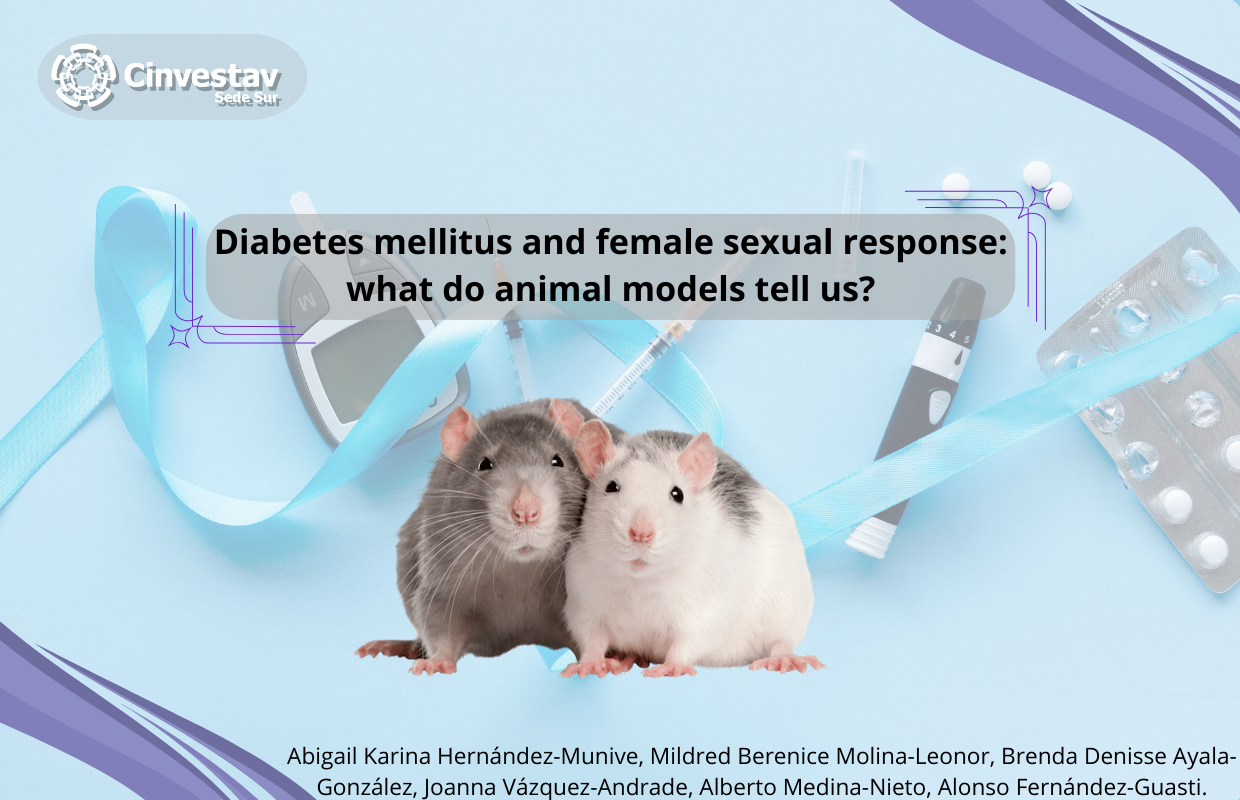Alonso Guasti - Diabetes mellitus and female sexual response: what do animal models tell us?

15 de junio del 2024
Invitamos a leer el artículo: "Diabetes mellitus and female sexual response: what do animal models tell us?", realizado por el Dr. Alonso Guasti, Investigador de Cinvestav Sede Sur
Autores:Abigail Karina Hernández-Munive, Mildred Berenice Molina-Leonor, Brenda Denisse Ayala-González, Joanna Vázquez-Andrade, Alberto Medina-Nieto, Alonso Fernández-Guasti.
Abstract: Background: One of the less explored effects of diabetes mellitus (DM) is female sexual dysfunction. Females of different species have been used as models. Aim: To analyze the information of animal models of DM and female sexual response (FSR).
Methods: The literature of FSR in models of DM was reviewed. Outcomes: Paradigm- and diabetes-dependent changes have been found in various aspects of the FSR.
Results: Females in a type 1 DM (DM1) model show a decrease in the number of proestrus events, and ovariectomized females treated with sex hormones have been used. In these females, a reduction in lordosis has been reported; in proceptivity, the data are contradictory. These females present a decrease in sexual motivation that was restored after exogenous insulin. In the type 2 DM (DM2) model, females show regular estrous cycles, normal levels of lordosis behavior, and, depending on the paradigm, decreased proceptivity. These females display normal preference for sexually active males or their olfactory cues when having free physical contact; they lose this preference when tested in paradigms where physical interaction is precluded.
Clinical Translation: Preclinical data showing the high deleterious effects of a DM1 model and the less drastic effects under a DM2 model are in accordance with clinical data revealing a much higher prevalence of sexual dysfunction in women with DM1 than DM2.
Strengths and Limitations: The main strength is the analysis of the changes in various components of FSR in 2 models of DM. The main limitation is the difficulty in extrapolating the data on FSR from rats to women and that most studies focus on evaluating the impact of severe or chronic-moderate hyperglycemia/hyperinsulinemia on the sexual response, without considering other pathophysiologic alterations generated by DM.
Conclusion: Females with severe hyperglycemia have a decrease in FSR, while those with moderate hyperglycemia show much less drastic effects.
Keywords:
female rat; diabetes mellitus; sexual behavior; insulin; sexual motivation.